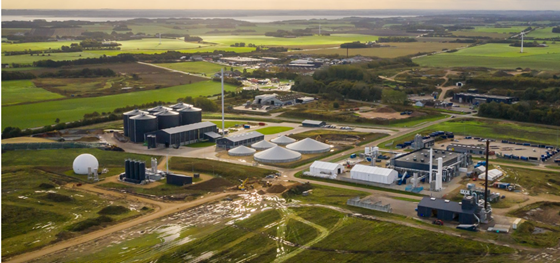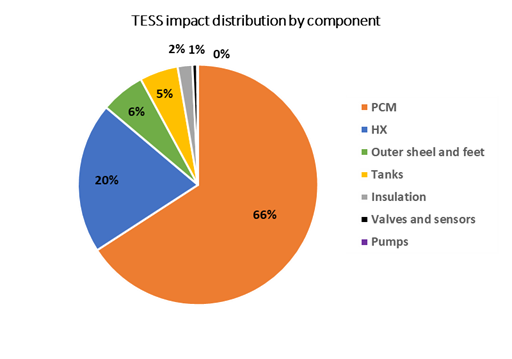After five years of research in the CHESTER project with plenty of results from experiments, market potential and business model opportunity studies, the consortium has drawn the major conclusions and established a roadmap to outline the current and future potential applications of the CHESTER system.
Under current studied conditions, i.e., heat and electricity prices, energy regulations and energy mix, etc., the use of CHEST as an electricity-only storage system (similarly to other electricity storage technologies) can hardly provide good economics (with a return on investment within the lifetime of the system). This is mostly because of not yet high enough fluctuations of electricity production and hence electricity prices, which represents the best application opportunity for the CHEST system. For this to happen, more renewable energy sources are needed in the electricity mix, and furthermore, the investment costs of the CHEST components (mostly the high-temperature thermal energy storage system) need to become more competitive.
An interesting business case study was found for an Eco-Industrial Park (EIP) in Denmark. This kind of application, which combines the storage of both heat and electricity, makes the best use of all the components of the CHEST system and engages several revenue streams, resulting in a positive business model already at MW scale (with a return on investment within 5 to 6 years). It requires the local availability of waste heat as well as actors with a heat demand, and such conditions are often met in industrial and Eco-Industrial Parks (EIPs). EIPs are growing worldwide (growth from less than 50 in 2000 to about 250 in 2020) and offer therefore a first promising market potential for the use of CHEST for the combined storage and delivery of heat and electricity.
The CHESTER consortium has also analysed the determining factors for obtaining a good economy with the use of the CHEST system, and identified the following:
- Effort needs to be made to reduce the investment cost of the Latent Heat Thermal Energy Storage: the high LH-TES investment costs comprises a great part of the investment in the CHEST system and are therefore a key cost component of the economic feasibility of business models involving the CHEST system. Currently, the LHTES is also the component with the lowest TRL, and therefore offers potential for optimisation and cost reduction.
- Favourable taxation on electricity: the CHEST system consumes electricity (by the heat pump), stores it as heat, and offers flexibility by producing electricity (by the ORC) when needed. Whether the use of the electricity is seen as power to heat, or flexible use of electricity, some specific tax reductions schemes can be applied to the CHEST system, and the consortium studies have shown that those regulations systematically improve the economy of the CHEST alternative.
- High load and long operating hours of the system: when the investment costs of a technology are high, making use of it as much as possible is what will logically drive a return on investment. This aspect is favoured in an EIP, since several actors can benefit from the use of the CHEST system.
- Excess of electricity and/or heat availability/mutualised (sector coupling): a future with more renewable energies integration will highly benefit the business models of CHEST systems, which places this technology in a good spot for energy systems in the mid/long-term future. This is directly related to the previous determining factor: in an energy system with a large amount of renewable energy production, the CHEST system will be used more often for storing excess energy and also will generate more benefits during operations due to the variability of the energy prices.
A general conclusion of the techno-economic studies from CHESTER is that the CHEST system is well suited for sector coupling and is likely to fit into the energy systems of the future, where renewables have a higher penetration into the energy system (both heat and electricity production). A potential economically viable application for the CHEST system has already been identified in EIPs, which are becoming more common worldwide. This only makes sense, since the CHEST system is an innovative energy storage and management system, which combines electricity and thermal storage technology as one. It can therefore “thrive” in both heat and electricity markets and fits perfectly in the developing electrified District Heating (DH) systems or industrial areas. There are, however, a few crucial aspects for a successful and cost-effective application of the CHEST technology:
- The CHEST system needs to be utilised as long as possible during a year at the maximum capacity it has been sized to.
- The CHEST system will perform more cost-effectively at future fuel, heat and electricity prices based on the available projections in different countries.
- Successful implementation of the CHEST system requires changes to the energy policy and regulations.
- The investment costs of the CHEST system need to be reduced. These cost reductions are envisaged in nearest future, given continuous development of the CHEST components and competitiveness between their suppliers.




